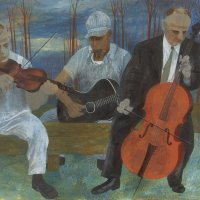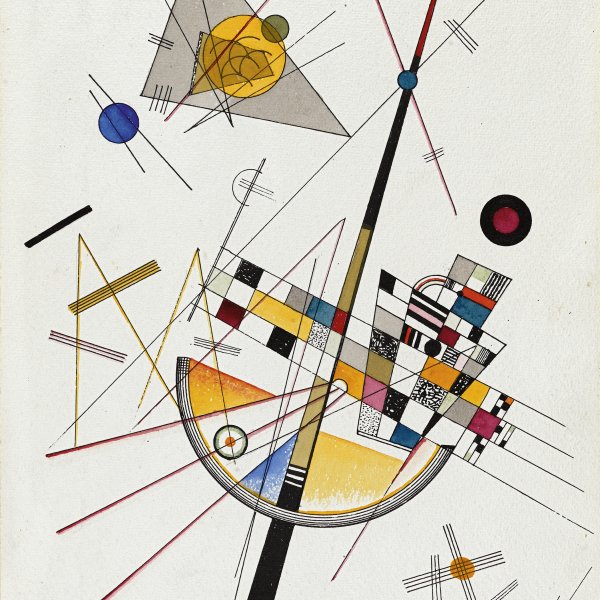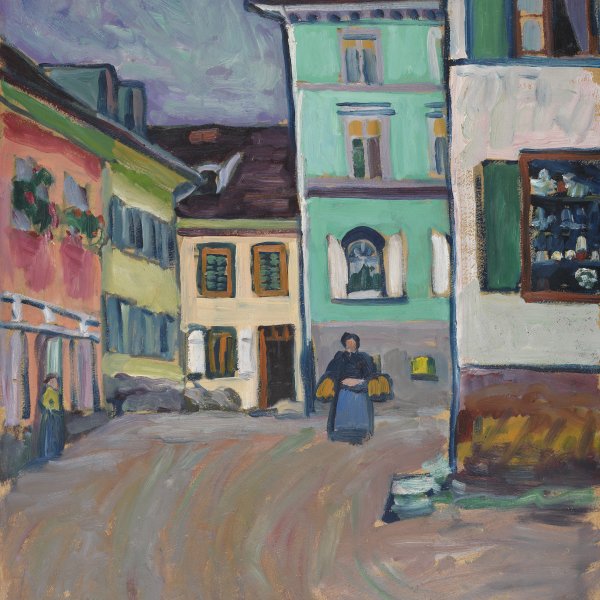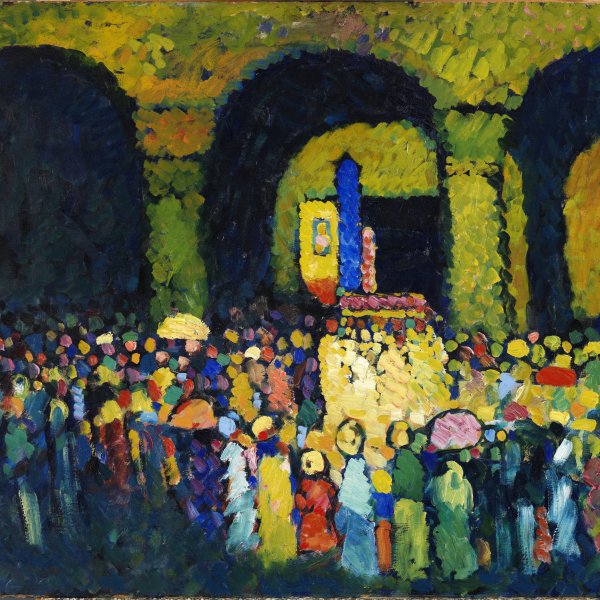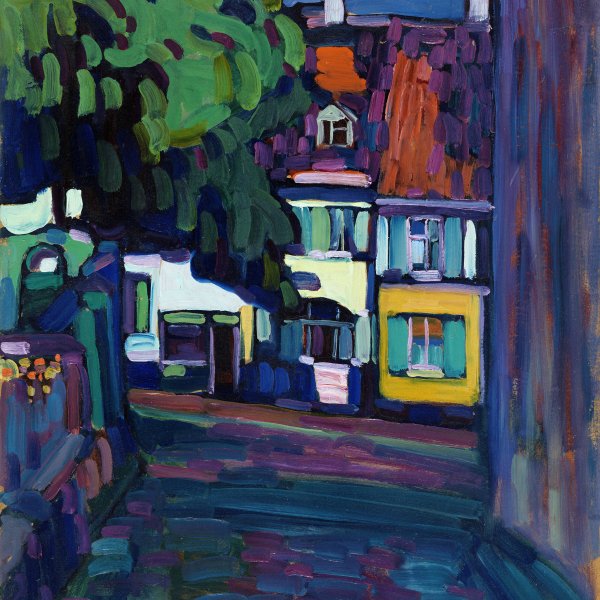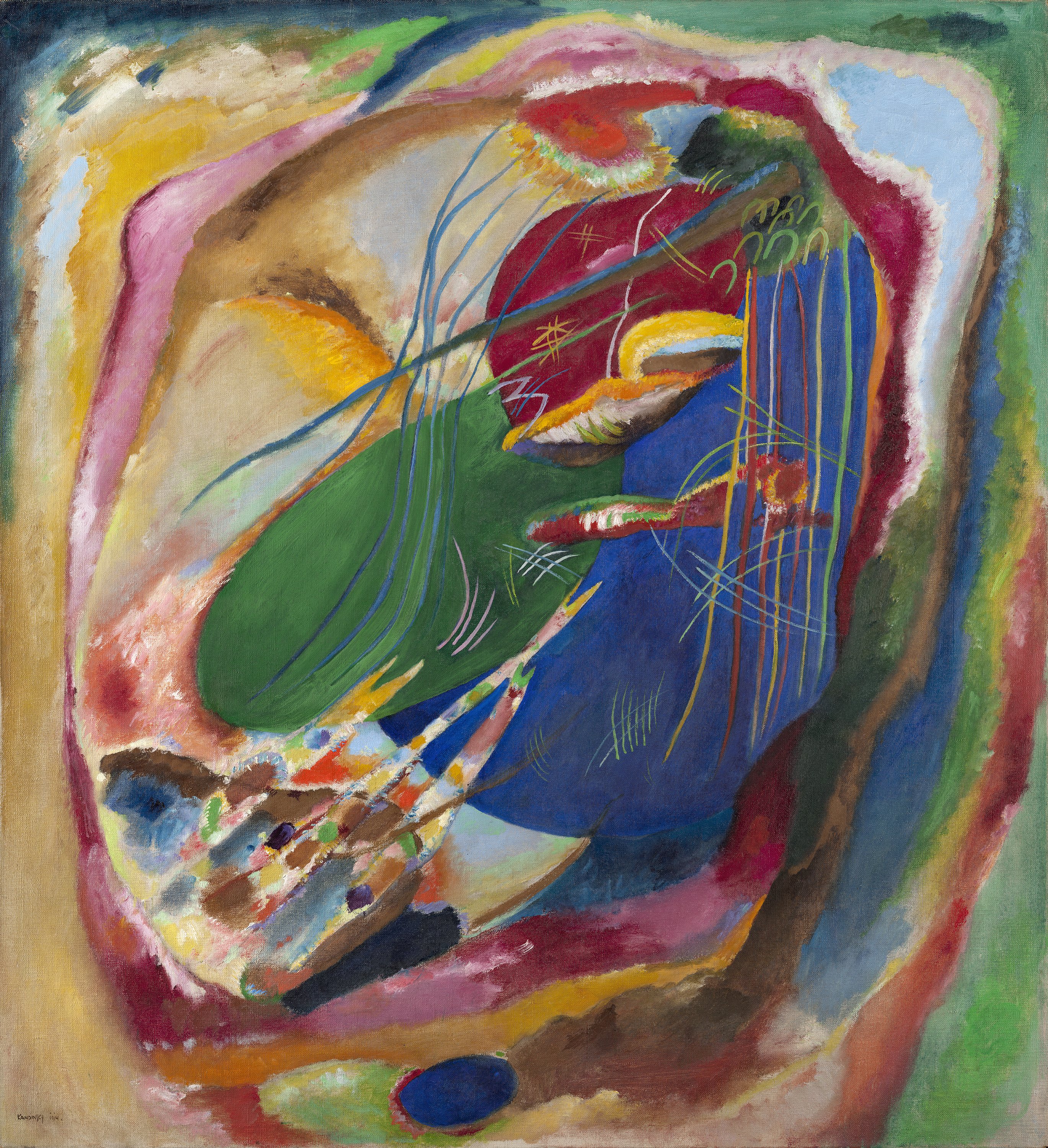Picture with Three Spots, No. 196
From the early 1910s onwards, Kandinsky turned his back on the depiction of the world of external appearances, embarking instead on the creation of wholly-abstract canvases, like Painting with Three Spots, which led to his being hailed as the great pioneer of non-objective art. These works express Kandinsky’s desire to create a pictorial equivalent of music, using a style capable of arousing emotions which—far removed from external realities—would become the expression of the artist’s inner strength. Here, the three large oval spots at the centre of the composition, surrounded by swirling shapes and bright colours, stress the religious symbolism of the number three and draw us into Kandinsky’s personal universe of spiritual, mystical aspirations.
Wassily Kandinsky, the leader of the Munich Expressionist group Der Blaue Reiter (The Blue Rider) and one of the pioneers of abstract painting, attributed a mystic function to art. Around 1910, he turned away from pictorial representation of the world according to the canons of objective perception dictated by Western tradition. He came to view form as “the outward expression of an inner content” which should be conditioned not by the outward appearances of things but by the need that drives the artist to create. Through this need, or inner force, Kandinsky seeks to arouse emotions in the viewer that go beyond mere sensations and free him of the materialism of modern life: “The inner element on its own is the emotion of the artist’s soul. This emotion is able to bring out a basically corresponding emotion in the soul of the viewer.”
The Picture with Three Spots belonging to the Museo Thyssen-Bornemisza collection was painted in Munich in the first half of 1914, before Kandinsky returned to Moscow at the end of the year, at a time when the Russian artist’s pictorial and theoretical experimentation had led him to the gates of pure abstraction. In the composition a series of fluctuating forms in intense colours, superimposed onto each other, occupy the entire picture space, while in the centre three more compact ovoid patches in flat shades of blue, green and red emphasise the divine symbology of the number three. However, although Kandinsky has dispensed with practically all references to the world of appearances, as Peter Vergo points out, certain references to visible forms are found in the preparatory drawing in ink: two small boats with people bottom left, which may refer to an apocalyptic theme; some vertical lines on the right, possible allusions to schematised figures; and a circular form above which Kandinsky has written “Kr.” (Krasnoe, red in Russian), a reference to the sun.
The present work has sometimes been associated with the set of Campbell Panels (also dated 1914), four large canvases commissioned from Kandinsky by the American businessman Edwin R. Campbell, the founder of the Chevrolet Motor Company, for his home on New York’s luxurious Park Avenue, after viewing the artist’s works at the Armory Show in 1913. These paintings, now in The Museum of Modern Art in New York, were numbered 198 to 201 by Kandinsky in his manuscript list of works, coming immediately after that in the Museo Thyssen-Bornemisza, which is assigned number 196. The fact that there are four and their different tones has led Kenneth Lindsay to suggest that Kandinsky had a certain idea of landscape in mind and considered them to be a representation of the four seasons. Whatever the case, in the light of Kandinsky’s beliefs, both the Campbell Panels and the Picture with Three Spots should be interpreted as non-objective paintings and as symbols of a spiritual aspiration. Viewed from this angle, the combination of patterns of abstract forms and colours is none other than an artistic expression of the creation of the cosmos.
Paloma Alarcó
Emotions through art
This artwork is part of a study we conducted to analyze people's emotional responses when observing 125 pieces from the museum.

